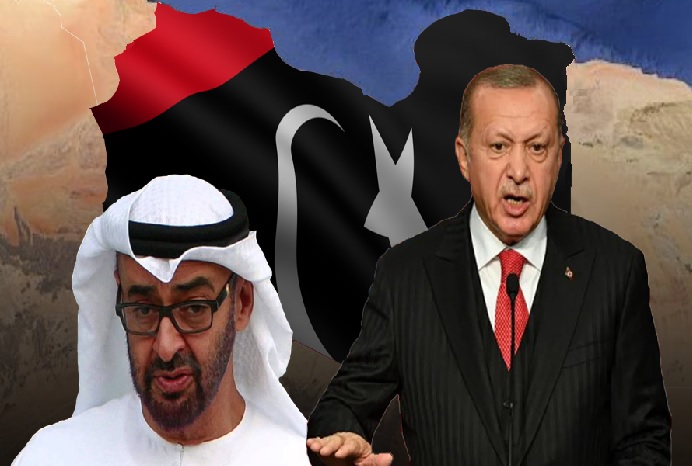The Sahel Move – Analysis of Campaign Against IS

The area of operations in the campaign against IS/Daesh will be shifting to another theater and analysts have noticed snippets of where the shift will be moving towards.

The area of operations in the campaign against IS/Daesh will be shifting to another theater and analysts have noticed snippets of where the shift will be moving towards.

Turkish drones in early April this year successfully carried out strikes on an Antonov military cargo aircraft from the UAE at an airstrip north of Tarhuna city in Libya. The hit was aimed at disrupting the UAE’s regular supply of weapons to the warlord Khalifa Haftar’s forces attacking the southern Tripoli front line. Since the fall of Muammar Gaddafi in 2011, Libya is virtually divided into two seats of power: The Government of National Accord (GNA) in Tripoli, which enjoys UN and international recognition but seriously backed only by Turkey, and the other group led by Khalifa Haftar, a renegade general, in eastern Libya backed by United Arab Emirates (UAE) sheikhs, the Egyptian military regime, Russian mercenaries and French leader Emmanuel Macron.

Fourteen months after he launched an assault on the Libyan capital of Tripoli, Libyan National Army Field Marshal Khalifa Haftar stood on a podium on Saturday in Cairo next to President Abdel Fattah al-Sisi and Libyan House of Representatives Speaker Aguila Saleh to announce that he would be accepting an Egyptian-sponsored ceasefire and a initiative to restart political talks in the factional conflict.

Les insurgés islamistes progressent dans la région nigérienne de Tillabéri, à la frontière avec le Mali. Face à cette menace, Niamey devrait accompagner ses opérations militaires d’initiatives politiques visant à apaiser les tensions entre les communautés frontalières et à entamer un dialogue avec les Nigériens ayant rejoint l’Etat islamique.
Not long ago, it was plausible to believe the Sahel region of Africa might be spared the internecine fighting that has characterized relations between the Islamic State and al Qaeda in Afghanistan, Syria, Somalia, and Yemen. For years, jihadis linked to al Qaeda operating in the Sahel tried hard to maintain jihadi unity, keeping open lines of communication with Islamic State franchise groups operating in North and West Africa, even while disavowing the Islamic State’s more extreme ideology. Some reports from the Mali-Niger-Burkina Faso tri-border area have gone beyond describing tolerance between the Islamic State in the Greater Sahara (ISGS), and al Qaeda’s affiliate, Jamaat Nasr al-Islam wal Muslimin (JNIM), and spoken instead of more concrete forms of collaboration, including the coordination of attacks.

The ‘War on Syria’ is far from being over, and it will continue until all foreign forces illegally present on Syrian soil retreat; either willingly, or defeated.

U.S. Africa Command assesses that Moscow recently deployed military fighter aircraft to Libya in order to support Russian state-sponsored private military contractors (PMCs) operating on the ground there.
Bottom Line Up Front:
After months of a military stalemate in Libya, Turkish-backed forces are beginning to push back militias commanded by warlord Khalifa Haftar.

The Islamic State claims in the latest edition of its weekly Al-Naba newsletter that Al Qaeda started a “war” against the so-called caliphate’s men in West Africa. Independent reporting confirms that the two sides have clashed in recent weeks.

On April 2, as Nigeria’s megacity Lagos and its capital Abuja locked down to control the spread of the coronavirus, the country’s military announced a massive operation — joining forces with neighboring Chad and Niger — against the terrorist group Boko Haram and its offshoot, the Islamic State’s West Africa Province. This spring offensive was in response to a seven-hour attack by Boko Haram fighters that killed 98 Chadian soldiers in late March. Since then, the joint Nigeria-Chad-Niger military offensive has killed hundreds of Boko Haram militants.